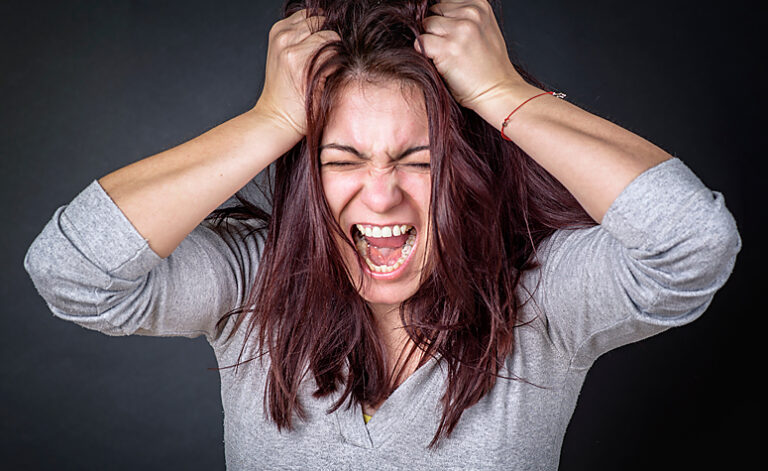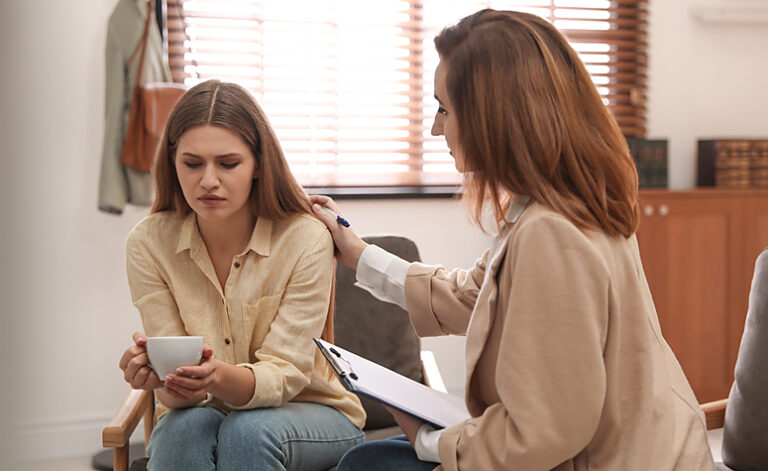Selective Mutism; Signs, Symptoms and Treatment
A severe and complex anxiety disorder, selective mutism (previously known as ‘elective mutism’) relates to a child or adult who feels consistently unable to spea

Signs and Symptoms of Trichotillomania
Trichotillomania is characterised by a recurring cycle of symptoms. Typically, you will first experience escalating tension, then you pull your hair out, which in turn brings relief and reduces your anxiety. You may do this as a response to a stressful situation or when you’re so distracted that you almost subconsciously pull your hair out.
You may often pull hair out from your scalp, but other hairy areas of your body, such as the eyebrows, eyelashes, pubic hair, beard or moustache, may also be affected. In addition to the pain that you feel as you pull your hair out, which results in bald patches on your head, you may also feel ashamed or feel as if the condition is affecting your self-esteem. Because of this, you shun social situations and do not allow others to know how the condition affects you.
The most common signs and symptoms of trichotillomania include the following:
- Recurring episodes of pulling your hair out from your scalp, eyebrows,
eyelashes or other areas of your body - Rising feelings of tension before pulling your hair
- A feeling of relief after the hair is pulled out
- Hair loss, thinning or baldness around your head, sometimes in uneven
patches or limited to just one specific area - Missing eyelashes or eyebrows
- Biting or chewing hair
- Struggling to stop yourself from pulling your hair out, not matter how
hard you try, usually without success - Problems in social situations at school or work which are associated
with the condition
You often engage in your hair pulling behaviour in private, which can also include other compulsive actions such as picking at your skin or biting your nails. Other items around the house with hair or hair-like qualities, such as pets, clothes or soft toys, may also be the object of your hair pulling activity.
Trichotillomania is a long-term disorder and can be related to underlying symptoms of other mental health conditions such as anxiety, depression, and stress. Thus, you can usually connect symptoms of the condition to your moods and emotions, which are often divided into two categories:
1. Negative emotions
You may pull your hair as a coping mechanism for negative feelings of boredom, loneliness or frustration. The behaviour may also be due to more serious mental health conditions like stress and anxiety.
2. Positive feelings
The repeated pattern of hair pulling and the relief you experience afterwards bring you such satisfaction that you want to maintain those feelings. This explains why the condition can last indefinitely and vary in severity over time.

What are the Causes of Trichotillomania?
The exact cause of trichotillomania is not yet fully understood, although one factor believed to contribute to the condition is genetics. There is proof that the disorder runs in families. However, not everyone with immediate family members affected by trichotillomania is guaranteed to be diagnosed during their lifetime.
Because there seem to be links with other diagnoses as well as other impulsive or mental health conditions such as OCD, anxiety and stress, additional psychological and emotional triggers could also increase your risk of developing trichotillomania.
Stress and anxiety
The common triggers of trichotillomania are believed to include going through a particularly stressful event and regular exposure to typical sources of stress or anxiety either at home, in school, or at work. Although it hasn’t been determined why these symptoms trigger the condition, it appears that hair pulling may have been substituted for more common bodily behaviours related to anxiety, such as shaking or nail biting, as a way of relieving anxiety and calming the nerves.
Obsessive compulsive disorder (OCD)
While OCD is an anxiety disorder in itself, hair pulling can be one of the habits or compulsions you experience when you have the condition to help cope with obsessive thoughts. People with obsessive compulsive disorder are more prone to having trichotillomania than those without the disorder.
Self harm
In rare instances, trichotillomania is believed to be associated with types of self-harm due to the pain caused by the act of pulling out your own hair and the psychological sense of relief experienced upon the removal of the hair.

What lies behind us and what lies before us are
tiny matters compared to what lies within us
Trichotillomania Treatment
Trichotillomania refers to a hair pulling disorder – a mental health condition in which an individual repeatedly experiences urges to pull hair from different parts of their body, including the scalp, eyebrows, and eyelashes. Despite being aware of its adverse effects, such as hair loss, the individual continues to engage in this behaviour.
Our treatment methods for Trichotillomania makes use of advanced research into the condition, with talking therapies such as cognitive behavioural therapy (CBT), which has been proven beneficial in minimising the severity of symptoms. We run a nationwide network of wellbeing centres and hospitals offering highly specialised outpatient care from experienced therapists and consultants.
Psychological disorders such as trichotillomania are referred to as impulse control disorders. Trichotillomania shares some common characteristics with obsessive-compulsive disorder (OCD), and it can sometimes co-exist with OCD. The irresistible urge to pull out hair on your body can sometimes result in baldness and may be done by using your fingers and sometimes with tweezers or similar instruments.
After removing parts of your hair, you may feel temporary relief from any anxiety you’re experiencing. Hair pulling often happens during highly stressful moments, but it can also occur when you’re distracted or even relaxed, such as when you’re watching TV or reading a book. Because the behaviour causes embarrassment, many people with trichotillomania engage in this behaviour in private to hide the disorder from others.
The effect of hair pulling on your physical appearance, combined with the anxiety from the overwhelming urge to pull out your hair and the shame associated with trichotillomania, can result in significant distress. This can negatively affect your work and social life. The good news is trichotillomania can be treated. At AddictionRehab, we have helped many people struggling with trichotillomania effectively reduce the extent of their hair pulling or even completely eliminate it.

Therapy for Trichotillomania
There are several talking and behavioural therapies which have been proven to help treat trichotillomania. These include the following:
- Habit reversal training (HRT)
Habit reversal training is considered to be highly effective in the treatment of trichotillomania. It enables you to identify thought patterns and situations which may increase your tendency to want to pull your hair. With the help of your therapist, you will work towards replacing this behaviour with behaviours that are less damaging physically and emotionally, such as clenching your fists or becoming conscious of your hand moving towards your hair and concentrating on re-directing it somewhere else on the body.
- Cognitive behavioural therapy (CBT)
CBT is a commonly used talking therapy in the treatment of many psychological issues. During CBT, you’ll deal with the connections between your thoughts and behaviours, enabling you to become more conscious of the unhealthy thought patterns which lead to the powerful urge to pull out your hair. Your therapist will ultimately teach you techniques to manage or change these abnormal thinking patterns to help alleviate your symptoms.
- Acceptance and commitment therapy (ACT)
ACT is a type of behavioural therapy which uses mindfulness and acceptance strategies to specifically deal with your behaviours associated with trichotillomania, aiding you in overcoming the disorder. In contrast to CBT, ACT teaches you to observe and accept the unwanted symptoms and events as part of the disorder.
Medications for Trichotillomania
At present, there are no formally approved medications to treat trichotillomania. However, drugs such as antidepressants and antipsychotics may help reduce some of the symptoms of the disorder.
When you schedule your initial assessment, you may be offered an appointment with a psychiatrist who will discuss the option of using medication. They can inform you of the side effects of any potential medication to determine whether a specific drug would be suitable for you.
Treatment for Trichotillomania at AddictionRehab
Some people have mild and manageable forms of trichotillomania. However, if you find that your compulsive urge to pull your hair is beyond your control, there are treatment options available which we can offer in order to help you regain control over these urges and put your life back on course.
Therapy treatment programmes are typically recommended for trichotillomania and would often be conducted on an outpatient basis. If other mental health conditions co-occur with your trichotillomania, such as depression, anxiety or addictions, an inpatient treatment programme may be recommended in order to address the underlying cause of the condition.
FREE Trichotillomania Assessment
If your or a loved one are struggling with Trichotillomania, we understand the challenges you’re facing and we’re here to offer compassionate help.
Our highly trained advisers are available to speak to you right away, simply call 0808 252 3379 today.
We can discuss your concerns in complete confidence, explore the options for treatment, and help you to understand what will work best for you.
We’ll also help you to book your free Trichotillomania assessment there and then, with appointments usually available within only a few days.
We understand that taking the first step can be the most difficult, but we’re here to support – with no pressure or judgement.
Professional and compassionate help is just a phone call or click away.




